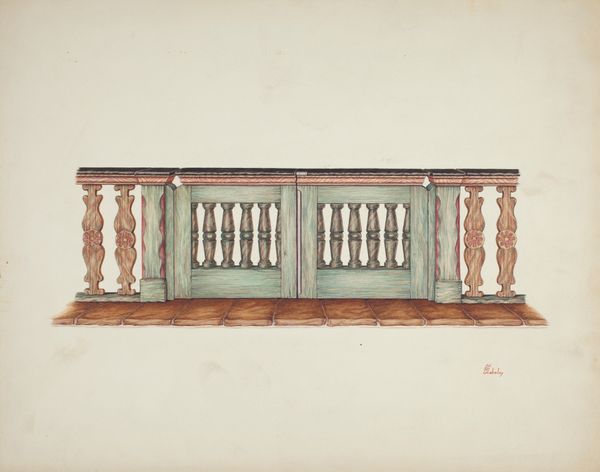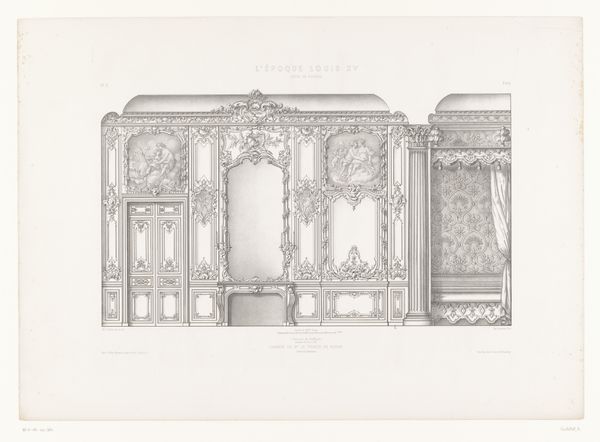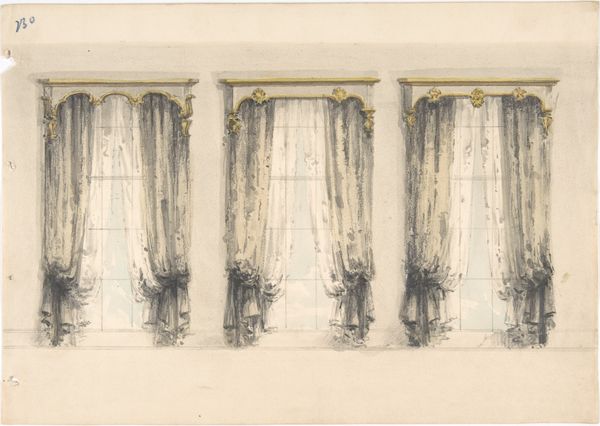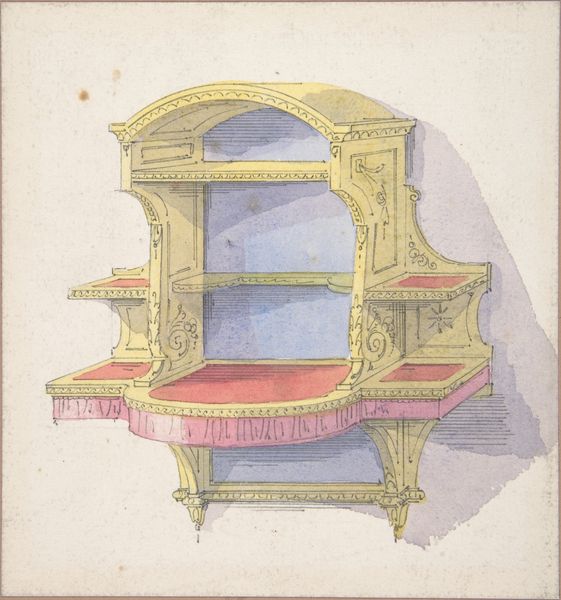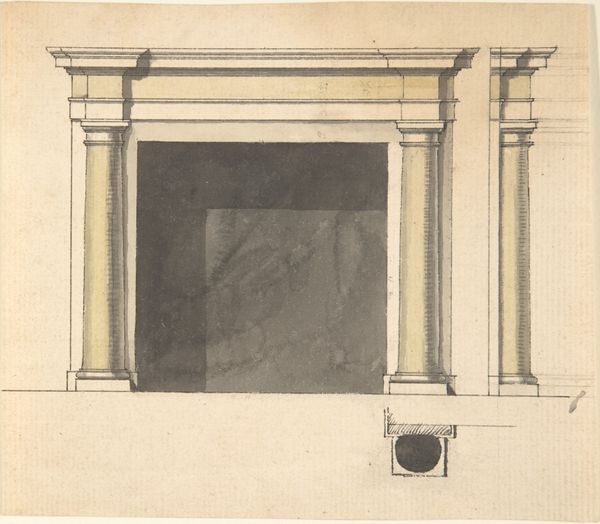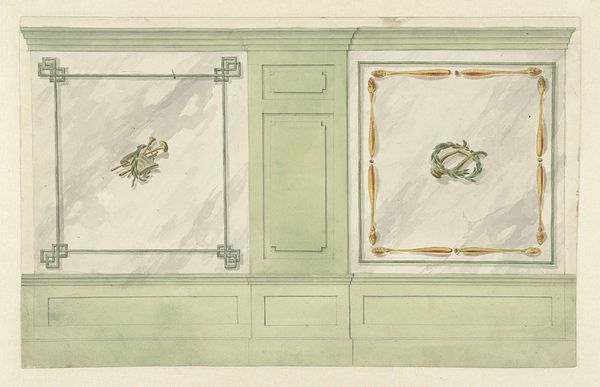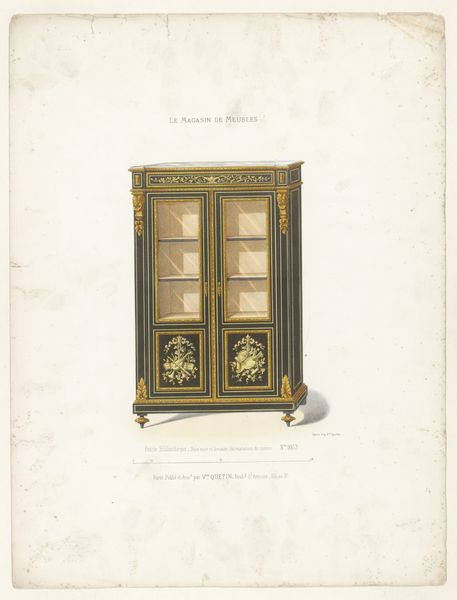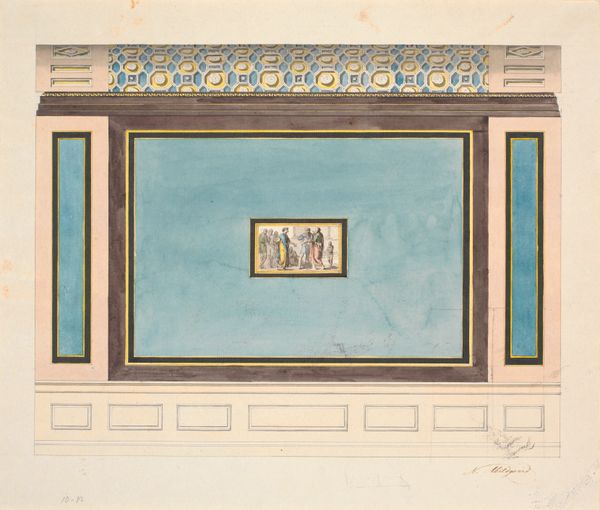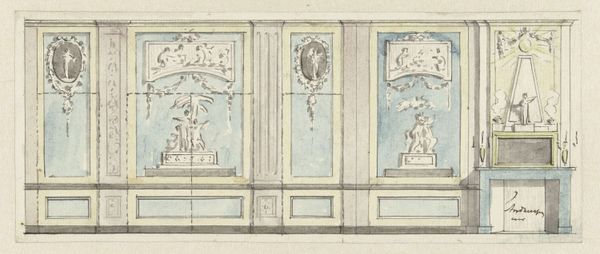
Ontwerp voor een kinderkamer Eerste Klas op de S.S. Prinses Juliana 1910
0:00
0:00
drawing, paper, watercolor
#
beige
#
drawing
#
aged paper
#
art-nouveau
#
parchment
#
light earthy tone
#
light coloured
#
paper
#
watercolor
#
nude colour palette
#
light and airy
#
geometric
#
light colour tone
#
warm-toned
#
cityscape
#
soft colour palette
Dimensions: height 248 mm, width 326 mm
Copyright: Rijks Museum: Open Domain
Editor: So this is "Ontwerp voor een kinderkamer Eerste Klas op de S.S. Prinses Juliana" by Carel Adolph Lion Cachet, made in 1910, with watercolour and drawing on paper. It’s a design for a first-class children's room on a ship, and what strikes me is the tension between the luxurious setting and the potential confinement. How do you see it? Curator: That's a perceptive initial read. Considering the era, this design embodies early 20th-century anxieties about class, mobility, and the constraints placed upon children, particularly within affluent circles. Who are these spaces really for, and who benefits? Editor: What do you mean by who benefits? Curator: Well, firstly who are these luxury cruises intended for, who can afford the lavish interiors of the S.S. Prinses Juliana? Secondly, are these cruises a liberation from social constraints for the upper class, or do the stringent expectations for their offspring create different sorts of constraint? Notice how the geometric order of the panels reflects the era's fascination with control. Editor: So you're saying that the design reflects a tension between freedom and restriction? That the beauty may mask the inequalities of class? Curator: Exactly. It is both an advertisement for aspirational travel and a reflection of the subtle ways social expectations are imposed, particularly on women and children, in the gilded age. It is crucial to investigate the historical moment as a complex network of power, where the pleasure and excitement is enjoyed only by the wealthy. Editor: It’s made me reconsider how I viewed what I thought was a beautiful design and consider these concepts of privilege, social class, and perhaps exploitation. Curator: Precisely! By acknowledging this piece as more than just decorative, we engage in a crucial conversation about the society and history that produced it.
Comments
No comments
Be the first to comment and join the conversation on the ultimate creative platform.
